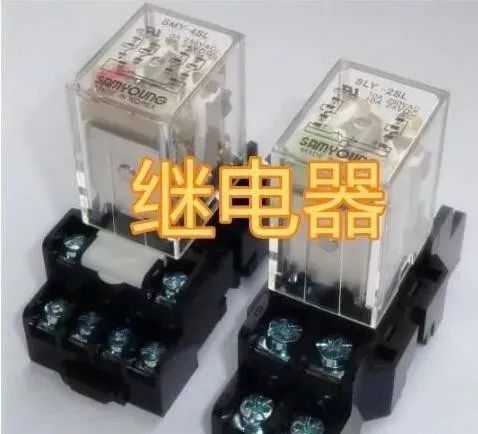In the automotive power system, contactors and relays are well-known guys, but many are ignorant, but they can't figure out what these things are different, and what is the connection. Let's talk about it today.
The contactor is an electric appliance that uses a coil to flow a current to generate a magnetic field to close the contacts to control the load.
A relay is a point control device, which is an electrical appliance that causes a predetermined step change in the controlled output quantity in the electrical output circuit when the change in the input amount (excitation amount) reaches the specified requirement.
Both are electromagnetic switchgear, which are identical in working principle. In some special cases, they can even replace each other.
The difference is that the relay can pass relatively small current, and there are many categories. Generally, it is only used to transmit signals, which is more common in the control loop. The current of the contactor is relatively large, in addition to transmitting the signal, it can also control the on and off of the main circuit.
The difference between the two shapes is as follows (there are many types of relays, the following figure is only the most common relays) â–¼


Yuhai piezo materials include : hard piezo material, soft piezo material and lead free piezo material
Soft piezo material exhibits: larger piezoelectric constants, higher permittivity, larger dielectric constants, higher dielectric losses, larger electromechanical coupling factors, low mechanical quality factors, a lower coercive field, poor linearity, and is easier to depolarize. The ideal application of soft piezo materials is sensing needs. Yuhai soft pizeo materials are PZT-5, PZT-5H, PSnN-5 and PLiS-51.
Hard piezo material exhibits: smaller piezoelectric constants, lower permittivity, smaller dielectric constants, lower dielectric losses, smaller electromechanical coupling factors, high mechanical quality factors, a higher coercive field, better linearity, and is harder to depolarize. The ideal application of hard piezo materials is high power transducer needs. Yuhai hard pizeo materials are PZT-4, PZT-8, PCrN-4 and PBaS-4.
Yuhai company developped lead free piezo material BaTiO3 and apply for the Chinese Patent in 2011, to meet the needs of environmental protection in today's society.
Piezoelectric ceramic material
Properties and Classification
General description of material properties
Material Code
Properties
Application
Soft PZT ceramic
PZT-51
Characteristics:
larger piezoelectric constants, higher permittivity, larger dielectric
constants, higher dielectric losses, larger electromechanical coupling
factors, low mechanical quality factors, a lower coercive field, poor
linearity, and is easier to depolarize.
low-power ultrasonic transducers
PZT-52
low-frequency sound transducers
PZT-53
applications with high g coefficient, for example,
PZT-5H
microphones,vibration pickups with preamplifier
PLiS-51
low-frequency vibration measurements
PMgN-51
Hydrophones, transducers in medical diagnostics
PSnN-5
Actuators
Hard PZT ceramic
PZT-41
Characteristics: smaller
piezoelectric constants, lower permittivity, smaller dielectric
constants, lower dielectric losses, smaller electromechanical coupling
factors, high mechanical quality factors, a higher coercive field,
better linearity, and is harder to depolarize.
PZT-42
High-power acoustic applications
PZT-43
Hydroacoustics, sonar technology
PZT-82
piezomotor
PCrN-4
PBaS-4
Lead free piezo ceramic
BaTiO3
Characteristics: Low density, low curie temperature, lead free.
Ultrasonic transducers suitable for low-temperature underwater, for example ultrasonic transducer in fishfinder
Piezoelectric Material,Piezo Ceramic Element,Piezo Electric Cylinder ,Piezo Sphere
Zibo Yuhai Electronic Ceramic Co., Ltd. , https://www.yhpiezo.com
